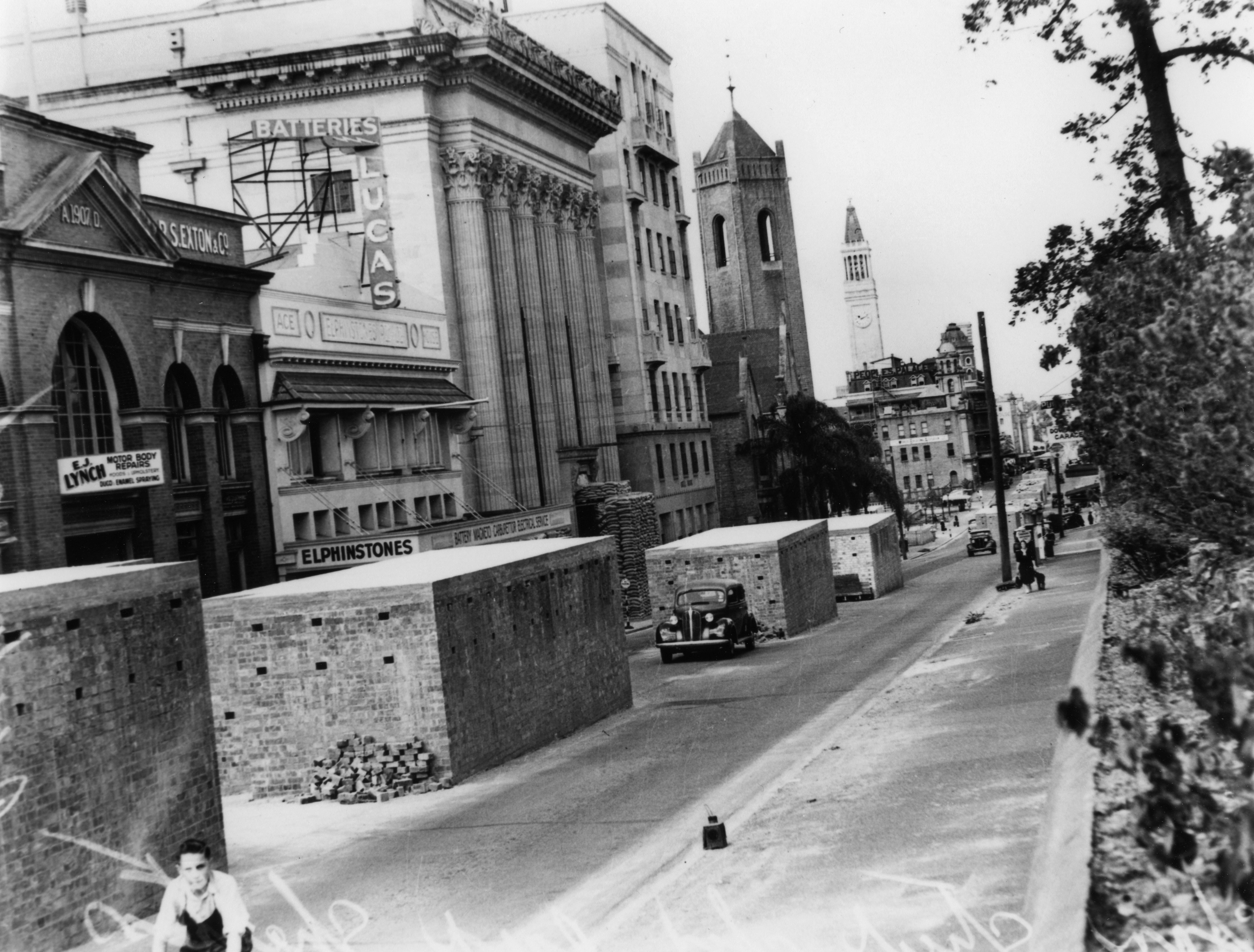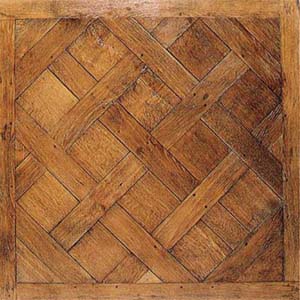|
Anzac Square Building
Anzac Square Building is a heritage-listed office building at 255A Ann Street, Brisbane, Ann Street, Brisbane City, Queensland, Brisbane City, City of Brisbane, Queensland, Australia. It was designed by John Smith Murdoch and built from 1931 to 1959 by A H Mason. It is also known as Queensland Government Offices, State Government Offices, Adina Apartments Hotel, and Murdoch Apartments & Hotel. It was added to the Queensland Heritage Register on 21 October 1992. History The Queensland Government Offices were built in stages commencing in 1931 and completed by 1959. It forms an integral part of the design by John Smith Murdoch, Chief Architect of the Commonwealth, for the block bounded by Edward Street, Brisbane, Edward, Ann, Creek Street, Brisbane, Creek and Adelaide Street, Brisbane, Adelaide Streets and consisting of separate state and federal government offices flanking a memorial square. Prior to the construction of the Queensland Government Offices the site was occupied ... [...More Info...] [...Related Items...] OR: [Wikipedia] [Google] [Baidu] |
Ann Street, Brisbane
Ann Street runs parallel to Adelaide Street and is the northernmost street in the Brisbane CBD in Queensland, Australia. The street is named for Anne, Queen of Great Britain, as part of the CBD street naming series of female British royalty. It is a major thoroughfare, linking as a four-lane one-way street the suburb of Fortitude Valley in the northeast with the Riverside Expressway in the southwest; house numbers run the opposite direction. Parks and buildings along Ann Street include the State Law Building, Central Railway Station, Brisbane City Hall, King George Square, King George Central, and also ANZAC Square and the Shrine of Remembrance (both of which commemorate Australia's and New Zealand's war dead). The now demolished Canberra Hotel (1929–1987) was located on the corner of Ann and Edward Streets. Each year, on Anzac Day (25 April), a dawn memorial service is held at the Shrine of Remembrance, with wreaths being laid around the eternal flame in memory of thos ... [...More Info...] [...Related Items...] OR: [Wikipedia] [Google] [Baidu] |
State Government Insurance Office (Queensland)
The State Government Insurance Office (SGIO) was a statutory authority in Queensland, Australia. History The Queensland Government established the State Government Insurance Office (SGIO) on 1 February 1917. The existing State Accident Insurance Office became the Workers' Compensation Department of the SGIO. The SGIO was responsible for insuring state assets and offering life insurance and general insurance (house, car) to the Queensland public. On 1 March 1986 it was merged into Suncorp Suncorp Group Limited is an Australian finance, insurance, and banking corporation based in Brisbane, Queensland, Australia. It is one of Australia's mid-size banks (by combined lending and deposits) and its largest general insurance group, fo .... References {{reflist Government agencies of Queensland Insurance organizations Defunct government entities of Australia ... [...More Info...] [...Related Items...] OR: [Wikipedia] [Google] [Baidu] |
Rockhampton
Rockhampton is a city in the Rockhampton Region of Central Queensland, Australia. The population of Rockhampton in June 2021 was 79,967, Estimated resident population, 30 June 2018. making it the fourth-largest city in the state outside of the cities of South East Queensland, and the 22nd-largest city in Australia. Today, Rockhampton is an industrial and agricultural centre of the north, and is the regional centre of Central Queensland. Rockhampton is one of the oldest cities in Queensland and in Northern Australia. In 1853, Charles and William Archer came across the Toonooba river, which is now also known as the Fitzroy River, which they claimed in honour of Sir Charles FitzRoy. The Archer brothers took up a run near Gracemere in 1855, and more settlers arrived soon after, enticed by the fertile valleys. The town of Rockhampton was proclaimed in 1858, and surveyed by William Henry Standish, Arthur F Wood and Francis Clarke, the chosen street design closely resembled the Hod ... [...More Info...] [...Related Items...] OR: [Wikipedia] [Google] [Baidu] |
Parquetry
Parquet (; French for "a small compartment") is a geometric mosaic of wood pieces used for decorative effect in flooring. Parquet patterns are often entirely geometrical and angular—squares, triangles, lozenges—but may contain curves. The most popular parquet flooring pattern is herringbone. Etymology The word derives from the Old French ''parchet'' (the diminutive of ''parc''), literally meaning "''a small enclosed space''". History Large diagonal squares known as ''parquet de Versailles'' were introduced in 1684 as ''parquet de menuiserie'' ("woodwork parquet") to replace the marble flooring that required constant washing, which tended to rot the joists beneath the floors. Such ''parquets en losange'' were noted by the Swedish architect Daniel Cronström at Versailles and at the Grand Trianon in 1693. Materials Timber contrasting in color and grain, such as oak, walnut, cherry, lime, pine, maple etc. are sometimes employed, and in the more expensive kinds the ric ... [...More Info...] [...Related Items...] OR: [Wikipedia] [Google] [Baidu] |
Silky Oak
''Grevillea robusta'', commonly known as the southern silky oak, silk oak or silky oak, silver oak or Australian silver oak, is a flowering plant in the family Proteaceae. It is a tree, the largest species in its genus but is not closely related to the true oaks, ''Quercus''. It is a native of eastern coastal Australia, growing in riverine, subtropical and dry rainforest environments. Description ''Grevillea robusta'' is a fast-growing evergreen tree with a single main trunk, growing to tall. The bark is dark grey and furrowed. Its leaves are fern-like, long, wide and divided with between 11 and 31 main lobes. Each lobe is sometimes further divided into as many as four, each one linear to narrow triangular in shape. It loses many of its leaves just before flowering. The flowers are arranged in one-sided, "toothbrush"-like groups, sometimes branched, long. The carpel (the female part) of each flower has a stalk long. The flowers are glabrous and mostly yellowish orange, o ... [...More Info...] [...Related Items...] OR: [Wikipedia] [Google] [Baidu] |
The Telegraph (Brisbane)
The ''Telegraph'' was an evening newspaper published in Brisbane, Queensland, Australia. It was first published on 1 October 1872 and its final edition appeared on 5 February 1988. In its day it was recognised as one of the best news pictorial newspapers in the country.Daily Sun, Saturday, 6 February 1988 Its Pink Sports edition (printed distinctively on pink newsprint and sold on Brisbane streets from about 6 pm on Saturdays) was a particularly excellent production produced under tight deadlines. It included results and pictures of Brisbane's Saturday afternoon sports including the results of the last horse race of the day. History In 1871 a group of local businessmen, Robert Armour, John Killeen Handy (M.L.A. for Brisbane), John Warde, John Burns, J. D. Heale and J. K. Buchanan formed the Telegraph Newspaper Co. Ltd. The editor was Theophilus Parsons Pugh, a former editor of the ''Brisbane Courier'' and founder of ''Pugh's Almanac''.Queensland Press Limited history report 19 ... [...More Info...] [...Related Items...] OR: [Wikipedia] [Google] [Baidu] |
ANZAC Square, Brisbane
ANZAC Square is a heritage-listed town square and war memorial located between Ann Street and Adelaide Street (opposite Post Office Square), in Brisbane, Queensland, Australia. It is a state memorial to the men and women who participated in overseas armed service and is named in honour of the Australian and New Zealand Army Corps. ANZAC Square is adjacent to ANZAC Square Arcade. ANZAC Square was opened on Armistice Day, 1930. It is also known as 9th Battalion Memorial and Queensland Women's War Memorial. ANZAC Square was registered on the (now inactive) Register of the National Estate in 1980 and added to the Queensland Heritage Register on 21 October 1992. ANZAC Square contains the Shrine of Remembrance and the 'Eternal Flame of Remembrance' held in a continuously lit bronze urn, dedicated on Tuesday, 11 November 1930. There is also the World War II Shrine of Memories. Daphne Mayo sculptured the Women's War Memorial that forms part of the memorial's wall. The exter ... [...More Info...] [...Related Items...] OR: [Wikipedia] [Google] [Baidu] |
Commonwealth Government Offices
Commonwealth Government Offices is a heritage-listed office building at 232 Adelaide Street, Brisbane City, City of Brisbane, Queensland, Australia. It was designed by John Smith Murdoch and built from 1933 to 1936 by relief workers. It was added to the Queensland Heritage Register on 21 October 1992. History This building, the first offices owned by the Commonwealth Government in Brisbane, was erected from 1933 to 1936. It formed part of a 1920s to 1930s local, state and federal government re-development of the inner city Brisbane block bounded by Ann, Edward, Adelaide and Creek Streets, resulting in the construction of Anzac Square (1928–30) flanked by imposing State and Commonwealth Government Offices. In the 1910s the Commonwealth Government had acquired the land between Ann and Adelaide Streets and fronting Creek Street, then occupied principally by commercial buildings, with the intention of erecting substantial Commonwealth offices on the site. There is some i ... [...More Info...] [...Related Items...] OR: [Wikipedia] [Google] [Baidu] |
Andrew Baxter Leven
Andrew Baxter Leven (2 February 1885 – 1966) was a Scottish-born architect in Australia. As chief architect in the Queensland Department of Public Works, he designed many of Queensland's public buildings, some of which are now heritage-listed. Early life Leven was born in Montrose, Angus in 1885.''Who's Who in Australia, 1921-1950'', p. 424 Leven trained as an architect in Scotland and then immigrated to Queensland in 1910 on the recommendation of friends. Architectural career He became chief architect of the Queensland Department of Public Works (Queensland Government Architect) in 1927. He was a Fellow of the Royal Australian Institute of Architects and chairman of the Board of Architects of Queensland and a member of the Architecture Faculty of the University of Queensland. Person life Leven married Ethel Maud Richardson in 1919. They had one son and one daughter. He retired in February 1951 and died in 1966 in Brisbane. Notable works * ANZAC Square, Brisbane * Bri ... [...More Info...] [...Related Items...] OR: [Wikipedia] [Google] [Baidu] |




